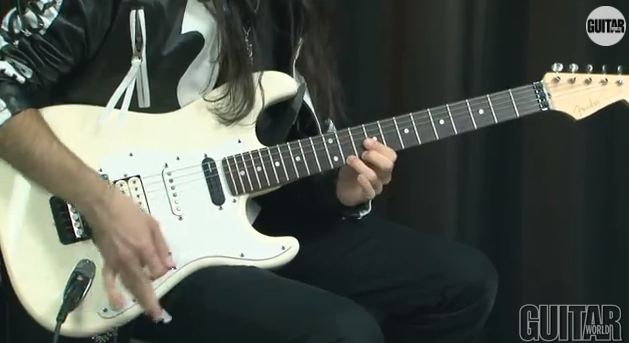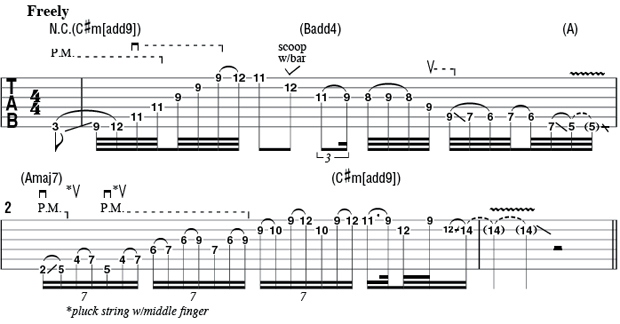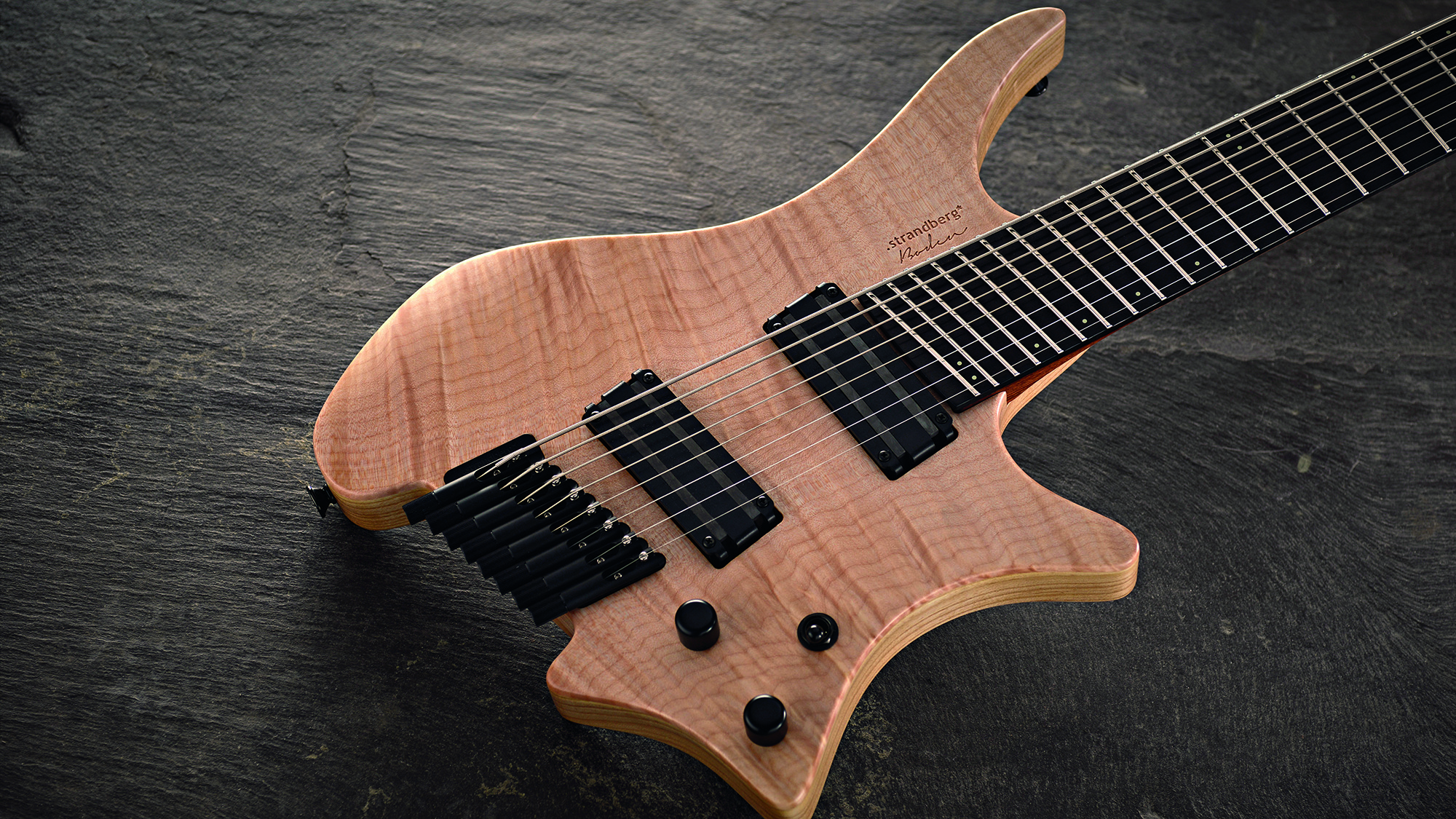Betcha Can't Play This: Ethan Brosh's Minor and Major Add-ons

This lick is in the key of C# minor and starts off with a C#m(add9) arpeggio [C# D# E G#].
The arpeggio in the first beat is actually just a straight C#m triad [C# E G#] played across all six strings in two octaves, although landing on the high D# note [first string, 11th fret] provides the ninth degree.
Begin the lick with the ascending finger slide and hammer-on, as shown, then perform the rest of the arpeggio with down-picks in a smooth, raking motion [commonly referred to as sweep picking]. To keep the notes separate and distinct, as opposed to sounding together like a strummed chord, try to lift your fretting fingers off each string as soon as you move to the next higher one.
The next part of the lick [bar 1, beats three and four] is an arpeggio-style run that outlines the flat-seven chord in the key of C# minor, a B major triad [B D# F#]. I add E notes to the run, however, which technically makes it a Badd4 arpeggio [B D# E F#]. When moving across the fourth and fifth strings at the ninth fret going into beat four, I use consecutive upstrokes to provide a smooth, sweep-like transition.
Bar 2 is based on an Amaj7 arpeggio [A C# E G#] that ascends up and across the neck, covering a full three octaves. I create an odd time feel here by using seven-note groupings, rather than sticking with more traditional four- or eight-note groupings.
I begin bar 2 with a down-stroke for the note slide on the sixth string, fretted with the middle finger, and then follow up by plucking the fifth string hammer-on with my pick-hand middle finger. I down-pick the sixth string again for the low A note and then repeat the fifth string hammer-on pluck with the middle finger. I continue up the neck with this hybrid picking approach for the remaining two octaves of the arpeggio on the D and G strings and the B and high E strings.
For the final part of the lick, I revisit the high D# note from bar 1 and conclude the phrase with a quick slide up to the root note C# on the B string’s 14th fret.
All the latest guitar news, interviews, lessons, reviews, deals and more, direct to your inbox!

